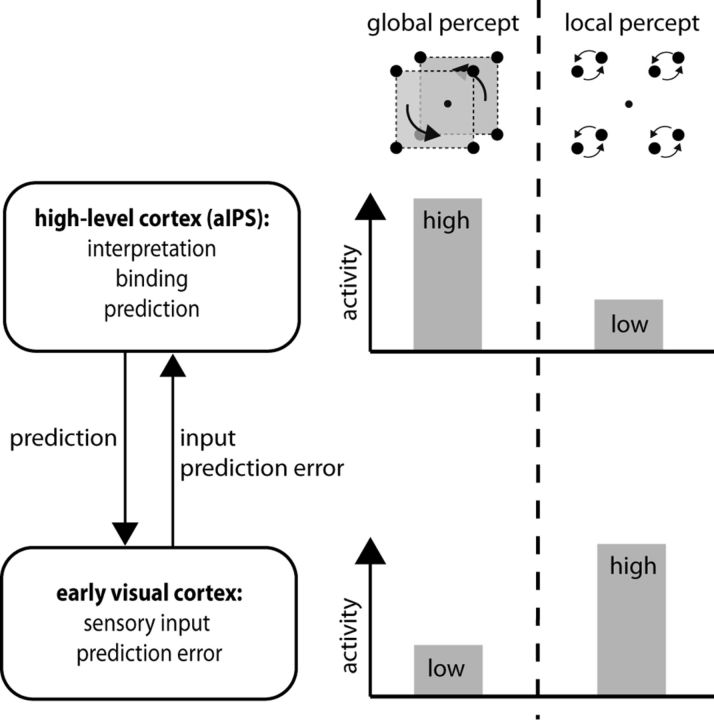Figure 6.
Interpretation of aIPS and visual cortex activity in context of predictive coding. The following reasoning could provide one possible interpretation of our data. During global perception, aIPS facilitates spatial binding of the sensory input and the encoding of the global interpretation in terms of two large moving squares. This function is associated with higher activity in aIPS. According to predictive coding theory, aIPS feeds its high-level interpretation/prediction of the sensory input back to early visual cortex. Because the prediction matches the sensory input, the two cancel each other out, leaving minimal prediction error and low activity in early visual cortex. Local perception arises when aIPS has low activity (or is disturbed by TMS) and does not spatially bind or encode a global interpretation, leading to higher activity in early cortex because no prediction cancels the sensory input.

